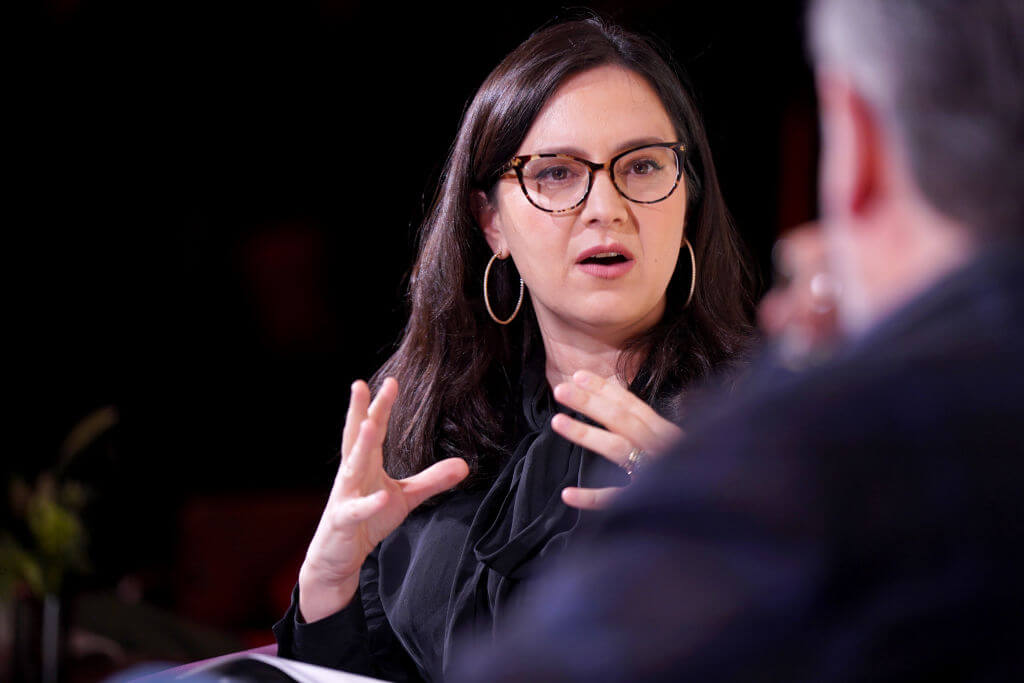Reclaiming ‘The Dybbuk’
In 1974 Jerome Robbins premiered an enigmatic choreographic work, “The Dybbuk,” for New York City Ballet. A collaboration with Leonard Bernstein, it was based loosely on the play of the same name by S. Ansky about spirit possession and exorcism. On April 5 at the War Memorial Opera House, San Francisco Ballet will revive the ballet, which has not been danced for a quarter of a century.
Robbins was long obsessed with the idea of creating a ballet based on the idea of the dybbuk, a spirit of a dead person who enters the body of a living human. “Dybbuk, Dybbuk, Dybbuk,” Robbins wrote in a letter to Bernstein in 1958. “I’m sending over an unseen but continually haunting prodder who will creep into your sleep and into your spare moments and will say the words Dybbuk, Dybbuk, Dybbuk. With this ghost’s effort, I know that suddenly something will be on paper that will get us all started.”
Ansky’s play, containing elements reminiscent of both “Romeo and Juliet” and “The Exorcist,” provided the source material for the ballet, which Robbins’s choreography and Bernstein’s music referenced without overtly literalizing it. The story concerns Leah and Chanon, whose fathers have pledged that their children will marry each other. When Leah’s father breaks the vow so that she can marry a wealthier suitor, heartbroken Chanon, a devout Orthodox theological student, delves dangerously into Kabbalah, becomes overwhelmed by his practices, faints and dies. At Leah’s wedding, Chanon’s spirit inhabits her body; in the act of exorcism, the dybbuk flees, but Leah dies and her spirit joins her beloved.
Robbins never intended simply to recycle the story, but, in his own words, he saw his ballet “as a point of departure for a series of related dances concerning rituals and hallucinations which are present in the dark magico-religious ambiance of the play and in the obsessions of its characters.” Divided into 11 sections, with names such as “In the Holy Place,” “Invocation of the Kabbala,” “Possession” and “Exorcism,” the choreography occasionally suggests Jewish folk movement, while retaining the vocabulary of ballet. Highlights include a dance for seven male elders, at times assuming the shape of a menorah, and a chilling pas de deux depicting the dybbuk’s possession of the girl.
At the 1974 premiere, critics either adored the collaborative experiment or dismissed it as lacking the searing emotionalism of the play. Nonetheless, Newsweek hailed it as “the loving handiwork of inspired men,” and composer Ned Rorem called Bernstein’s score his “best music to date.” (Bernstein’s commissioned composition utilized a mathematical sequence, based on the 22 letters of the Hebrew alphabet, with 18s and 36s within the octave range.) But Robbins, disappointed by the reception of the work, kept editing the ballet into abstraction — even changing the name to “Dybbuk Variations” — until New York City Ballet finally dropped it from the repertoire in 1980.
“I kept wondering, ‘Why didn’t Jerry bring this work back?’” said Helgi Tomasson, artistic director of San Francisco Ballet, who danced the male lead at the world premiere of “The Dybbuk.” Tomasson, now in his 20th year with San Francisco Ballet, had his own suspicions. Two years before “The Dybbuk” premiered, New York City Ballet had scored a huge success with its Stravinsky Festival, in which George Balanchine prolifically turned out neo-classical, abstract works, many of which have become modern-day classics.
“I think in some ways ,when Jerry did ‘The Dybbuk,’ which was very dark and dramatic, people were perplexed,” Tomasson said. “Some who wrote about the ballet felt he had not followed the story exactly. I suspect that’s why he started to modify it. I think it upset him — he was hurt. But I think we should give the audience a chance to view it again and see what their take is.”
Throughout his existence, Robbins experienced conflict about the role that Judaism played in his life and creativity. He had triumphed with “Fiddler on the Roof,” and his 1965 ballet “Les Noces” about a Russian Jewish wedding was widely praised. But his decision to gut “The Dybbuk” and finally abandon it could have resulted from a personal feeling of failure to communicate in dance form the essence of an esteemed piece of Jewish theater. Robbins, who died in 1998, never tackled another Jewish theme in his choreography. And he never collaborated with Bernstein again.
In a 1974 Newsweek article, Robbins and Bernstein discussed their inspirations for “The Dybbuk.” Robbins claimed, “Choosing ‘The Dybbuk’ had nothing to do with my being Jewish.” Bernstein countered with: “In a larger sense, what we’ve had is based on our experience of Jewishness. Isn’t that right, Jerry?” Robbins paused and said, “I don’t know,” and then smiled and added, “But we are what we are, and that feeds into it.”
Joseph Carman is the author of “Round About the Ballet”(Limelight Editions, 2004).















